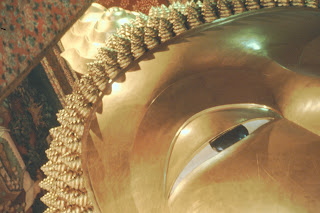 |
| out to the lagoon |
I’m finally back with you, feeling guilty and remiss. But a day (or 10) with my sister Janet is an expanding balloon that never pops. Her Spanish flavoured Carlsbad, Californian home is a hop, skip and jump from the beautiful 600 acre Batiquitos salt water lagoon in Carlsbad, California, 30 minutes north of San Diego. A few weekends ago I slung my camera over my shoulder, set out for the lagoon and found a huge snowy egret sitting on her nest high in a tree.
 |
| an amazing tree |
I was alone that weekend because Janet was giving a conference opening keynote speech in Minneapolis. But, before flying out she gave me a package of local maps, her library card, a one week membership for a woman’s fitness spa, her bicycle, the keys to her car, directions to major shopping areas and the local coffee shop. She didn’t miss a thing.
 |
| by the lagoon trail |
Before I arrived, she’d found a set of bedroom furniture on Craig’s List, painted it in funky colours, lugged it upstairs and put it together. Amazing. On the footboard she’d painted, “hermana” (sister). Touching. As I looked around the bedroom, I imagined dresser drawers and paint sprawled across the backyard. In the en suite bathroom there was a large red rose, fresh from the garden.
I thought that it’s not what we say; it’s what we do that makes the difference. On the dresser top, I spotted a small box containing folded pieces of paper. I knew what to expect. This would be our fun for the next 10 days. Janet looked exited.
So what had my energetic, imaginative sister dreamed up this time? What could trump a full on weekend sailing course in San Diego Bay ten years ago navigating the waters around a US Navy warship and a gazillion other boats of all shapes and sizes, or a three day weekend flight in her plane to a north western Mexico medical clinic four years ago?
Well as I sifted though the pieces of paper, I realized, a lot of things taken together could trump those other experiences -- a stroll around Art Walk in San Diego, a scavenger hunt in Encinitas, carving in soapstone, participating in Earth Day, visiting museums in Balboa Park, playing tennis, walking the lagoon and Mission trails, writing a Lapp sister memoirs (in a weekend?), seeing a play at the La Jolla Playhouse, camping at Julian, going on a photo shoot, taking an Apple One to One class, attending an evening cooking class, designing a book about doors from photos I’d taken in Mexico, reading magazines at the Carlsbad Library, viewing Titanic 3D at Cineopolis, making chocolate bars (Janet has a chocolate business), taking a Spanish class, joining Yoga and Pilates fitness classes, having a spa treatment and kayaking in Mission Bay.
Unbelievable. On top of crossing most of the above off the list, I went boogie boarding for the first time, riding the waves in my sister’s scuba diving suit. And as an added special bonus, our daughter Susan, her husband, Alan, and our grandchildren, Max and Kai arrived at Janet's from Nelson for a one week visit at the end of their camping and hiking road trip in the States.
After I getting home on April 30th I had left eye surgery. All went well. I’m glad to be back with you.
More photos to follow --
Next blog Flight to Al Fuerte
Upcoming Return to Nepal









































